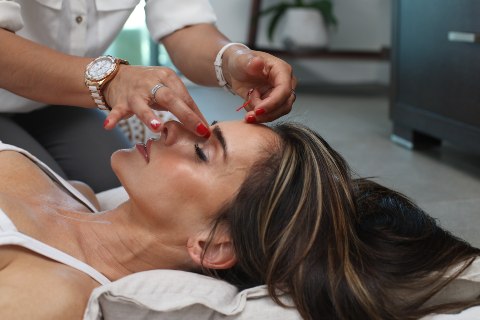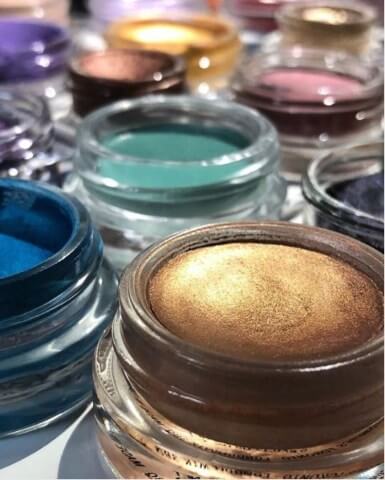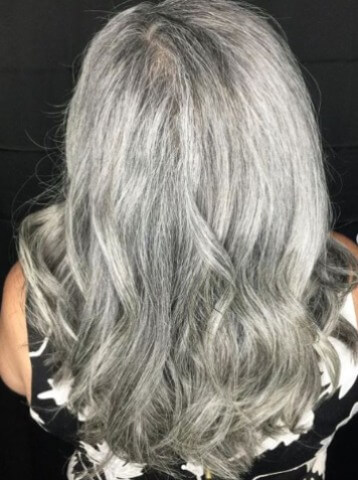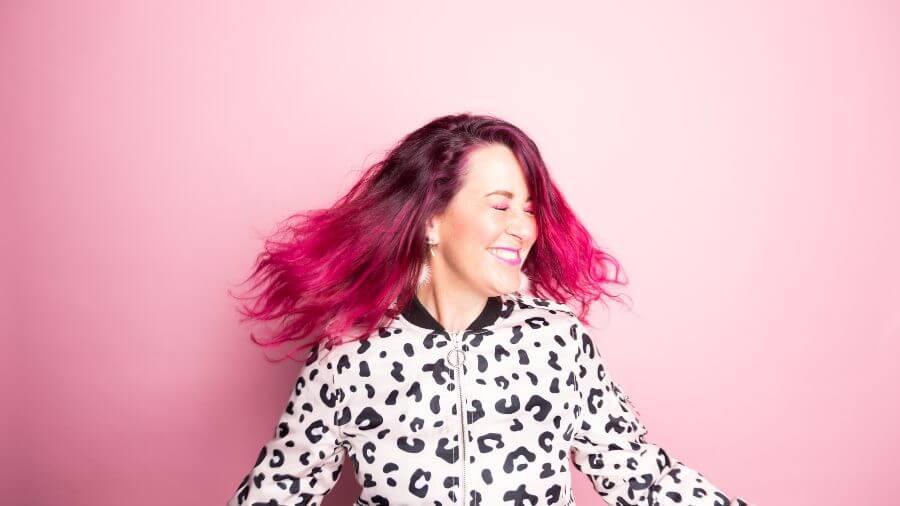John Keats was spot-on when he wrote “Beauty is truth, truth beauty—that is all,” because when it comes to our appearance, all midlife women want is straight answers. Respondents to the NextTribe Beauty Survey shared their most confounding skin concerns, cosmetic conundrums, and hair hassles, and we went to the top pros for smart, doable solutions. Find your truth and beauty, right here, right now!
Question #1: Enough beauty hype! What does 50+ skin really need in terms of products and ingredients?
“Menopause results in a steady estrogen decline, which causes a decline in collagen production—and with it some of the bounce, moisture, and glow of our skin,” says Marta Wohrle, founder of Truth in Aging, the online community dedicated to just-the-facts-ma’am info on beauty and personal care. “Skincare for 50-somethings ideally will focus on strengthening the moisture barrier, encouraging collagen production, and thickening the skin.”
Adds Boston-based dermatologist Ranella Hirsch, MD, co-founder of the personalized skin care company Atolla, “In your 50s and beyond, sun damage and wrinkling are primary concerns, so in addition to repair, sun protection to stave off further damage is an absolute must.”
Consider this sensible regimen:
- For cleansing, a gentle, soap-free product to remove dirt and oils, with ceramides and hyaluronic acid to restore moisture.
- For exfoliation (i.e., cell turnover), alpha and beta hydroxy acids and/or a vitamin-A derivative (either a prescription retinoid or over-the-counter retinol).
- For hydration, a moisturizer with ingredients like hyaluronic acid and niacinamide. By day, if your moisturizer has a broad-spectrum SPF or 30 or higher, all the better. By night, try a moisturizer that packs a real punch like this one from Lancome. Pause offers a collagen-boosting moisturizer and a whole range of products specifically for skin in three stages–perimenopause, menopause, and post-menopause.
- For specific issues, a serum applied sparingly to the problem area. “Use a serum where the active ingredients can best impact the concern,” advises Wohrle. “For example, neuropeptides control expression lines such as crow’s feet, so use it around the eyes, rather than slather it all over the face and neck.” We love Loreal Paris’s 1.5% Pure Hyaluronic Acid Serum.
Question #2: I’m curious about the latest cosmetic procedures. What can I expect in terms of results, recovery, and cost for microdermabrasion, Thermage, chemical peels, and laser skin rejuvenation?

What to expect with the latest cosmetic procedures? Image: Antonika Chanel/Unsplash
These procedures can improve skin’s appearance by minimizing fine lines, wrinkles, sun damage, and scars while improving texture. Here, Dr. Hirsch explains how they stack up:
- Microdermabrasion uses a fine spray of crystals or other agents/techniques to manually exfoliate the skin, exposing the new smoother layer below. It is minimally invasive, has the shortest downtime, and costs range from $75 to more than $200 per session, according to the American Society of Plastic Surgeons.
- Thermage employs a radio frequency to cause controlled damage and stimulate collagen production to help firm and tighten loose skin. Thermage often targets the jawline and eye area, but it can be used on the body as well. Downtime can be several days, and costs range between $1,000 and $5,000; the average cost for facial Thermage is $2000.
- Chemical peels rely on glycolic acid, salicylic acid, or other chemicals to remove outer layers of skin. After a light peel, skin will appear to be sunburned, with redness and scaling that lasts up to a week; deeper peels, which fully penetrate the middle layer of the skin, have longer downtimes. A light peel may start at $150, with deeper peels running upwards of $3,000; the average peel costs about $675.
- Laser skin rejuvenation “resurfaces” the skin, typically targeting scars, pigment, and wrinkles, using either ablative (removing the top layer of skin) or non-ablative (heating the underlayers to stimulate collagen production) lasers, depending on desired results. Recovery from ablative treatments, which cost on average $2,330, may be as long as six weeks. “In recent years, new innovations and modalities, such as fractional laser devices, have been introduced; these treat specific areas while preserving others, reducing the downtime,” Hirsch points out.
Read More: Your Face, Skin and Hair at Midlife: What’s Working for You?
Question #3 How can I use foundation and concealer correctly? What formula and application techniques will hide discoloration but not accentuate lines and wrinkles?
Few products are as tricky as foundation. Glop it on too heavily, and it highlights creases; use too little and dark spots, redness, and the like show through. Fortunately, among all the improved formulas with different levels of coverage are some specifically suited to mature skin.
Still, the key to a flawless face is first applying primer to smooth lines and help foundation go on evenly and last longer. “If coverage and discoloration are your concerns, I recommend a color-correcting primer and then a hydrating serum foundation with light to medium coverage,” says Charles Riddle, director of Editorial Artistry and Innovation for Stila Cosmetics, makers of Aqua Glow Serum Foundation.
Be sure to use the right tool for the job! “I like a non-latex wedge sponge—instead of your fingers or a brush, which tends to lay the product on too thick—to apply foundation lightly and blend up, down and all around,” says makeup artist Carmindy (whom you might remember from TV’s What Not To Wear). Her Carmindizing Foundation, made from sugar derivatives, “jellifies on the skin, mimicking its natural texture,” she says. “It won’t settle into fine lines or wrinkles and it never gets cake-y, yet it covers spots and discoloration”
Give foundation a minute to set before applying concealer where needed. “Tap over trouble spots with a sponge to blend in seamlessly with foundation and give a natural finish,” Riddle says.
Question #4 My current eye makeup doesn’t work for me anymore—it makes my eyelids look crepe-y. What should I try?

“Riddle suggests switching from a powder shadow to a cream formula.” Image: John Bond Makeup/Instagram
The magic that primer can do for your face works on eyelids as well—creating a smoother surface on that delicate area and keeping eye shadow from creasing into a crepe-y look. Stila One Step Correct, available at www.sephora.com, gets high marks.
Also, Riddle suggests switching from a powder shadow to a cream formula with a subtle shimmer, nothing too glittery or too matte (two to try: Stila Shimmer and Glow Shadows and Laura Mercier Caviar Sticks). When it comes to colors, take a middle-of-the-road approach with soft neutrals like a soft brown, fawn, or taupe (express your wild side in other ways). Also, liquid liner tends to crinkle on mature eyes; opt for a softer line drawn with pencil and blended.
Read More: Our Changing Relationship with Makeup: A Personal History
Question #5 My eyebrows have gotten rather thin and light. What are my options to make them look darker and fuller?
“There are so many great ways to enhance brows now—finally!” Riddle enthuses. For a semi-permanent solution, consider microblading, a tattooing technique in which a tiny blade creates fine “hair” strokes, into which pigment is deposited. Just be sure to go to a qualified professional and look at ample before-and-after photos prior to making your decision.
Another option, says Carmindy, is using eyelash products on the brows, like LashBoost (a serum) or Latisse (a glaucoma medication also used to grow longer lashes that requires an Rx). And makeup for brows has come a long way, too. “Use a fine-tipped pen, rather than a powder, to mimic the natural hairs of your brow,” says Riddle.
Question #6: What can I do about the puffy area under my eyes?
Those bags may be due to a number of factors, including diet (fluid retention from too much salt), allergies (seasonal, or to a product you’re using) and, alas, the aging process. According to the Mayo Clinic, the tissues around your eyes, including some of the muscles supporting your eyelids, weaken and fat that normally helps support the eyes can then move into the lower eyelids, causing them to appear puffy.
To reduce swelling, apply cool compresses or try the makeup artists’ secret of keeping eye cream in the fridge, then patting it on 10 minutes before applying makeup. You may also want to do some research into a dandelion-root supplement as a gentle, natural diuretic; some women say this helps reduce puffiness.
Read More: Diary of an Eyelift: Yes, I Did It—and I Love It
Question #7: What can I do about thinning hair? Are there styles and products that can make it look fuller?

“For thicker, fuller hair, Peralta recommends John Paul Mitchell Systems Tea Tree Scalp Care.” Image: The Pump Room/Instagram
“Thinning hair may be due by a number of factors, including hormonal changes, stress, genetics, and diet,” says Paula Peralta, National Educator at John Paul Mitchell Systems. First, Peralta suggests getting a graduated haircut that will give the appearance of more weight to low-density hair. Remember, the longer the cut, the thinner the look, so keep tresses shoulder-length or shorter. Also consider getting blunt-cut bangs to beef up the look of thin hair.
For thicker, fuller hair, Peralta recommends John Paul Mitchell Systems Tea Tree Scalp Care, a three-product regimen designed to increase hair volume and strength by 85 percent. “Before styling, work Paul Mitchell Extra Body Thicken Up from the middle of strands through the ends,” she says.
Better Not Younger is a new product line just for women like us; the company offers just about everything you’d need for your hair care now–from hair thickeners to vitamins that promise to fortify your strands from the roots.
Question # 8: I got real and went gray but my hair is coarser and less manageable now. How can I care for my silver strands so they look healthy and polished?
Embracing your natural hair color can not only be flattering, it’s also a great way to lessen salon time and costs. Yet there are two main downsides: One, whatever your shade of gray (pewter, silver, white), it can take on a yellowish cast or a brassy undertone, much like blonde hair can. Two, because gray texture tends to be coarser and curlier—even wiry—it can be more challenging to style.
Neutralize unwanted tints with a shampoo formulated for gray hair that enhances your new true color. (Redken Color Extend Color Depositing Graydiant Shampoo has amino acids to strengthen strands, too).
Follow with a conditioner rich in hydrating ingredients, such as oils, botanicals, and vitamins to restore moisture. Adding a gloss to your hair care regimen can bring shine and vibrancy while also counterbalancing brass.
If you’ve been a slave to the blow dryer, flat iron, or other heat styler for years, know that these devices further stress your tresses. If you must use them, apply a protective product to damp hair first. Better yet, ask your stylist for a wash-and-wear cut—Jamie Lee Curtis sports a powerful pixie you may want to try.





















0 Comments